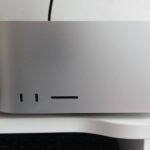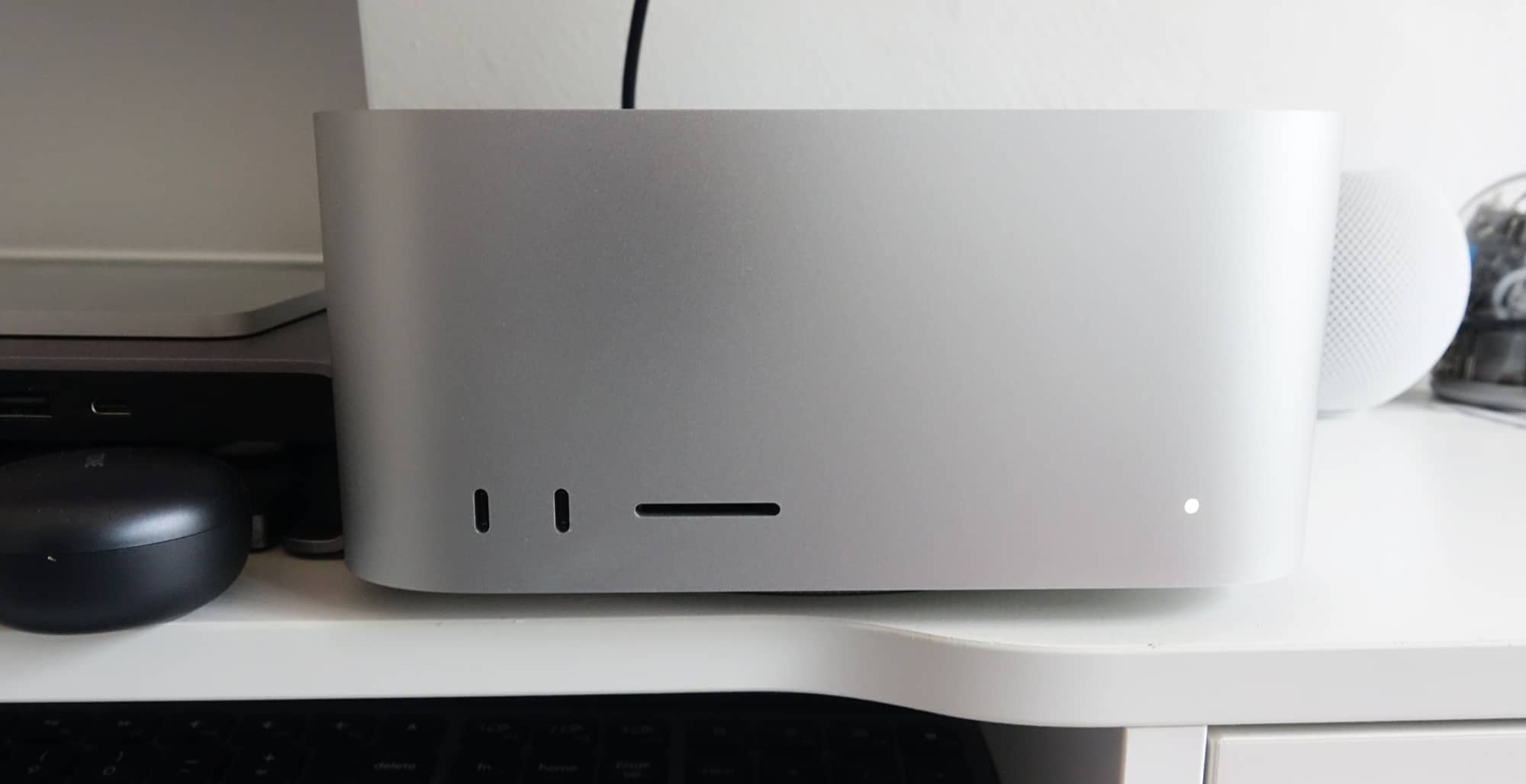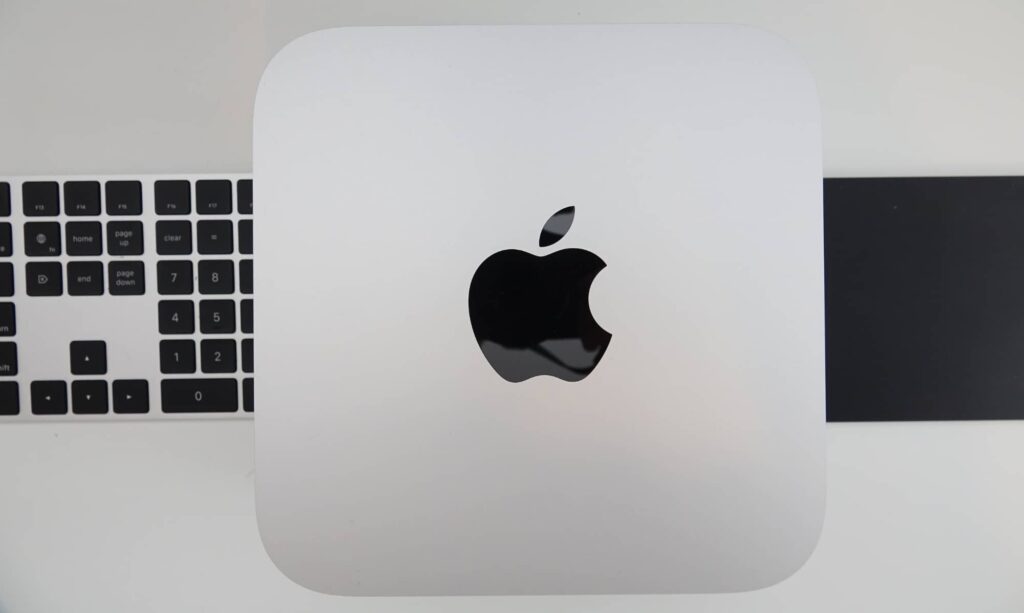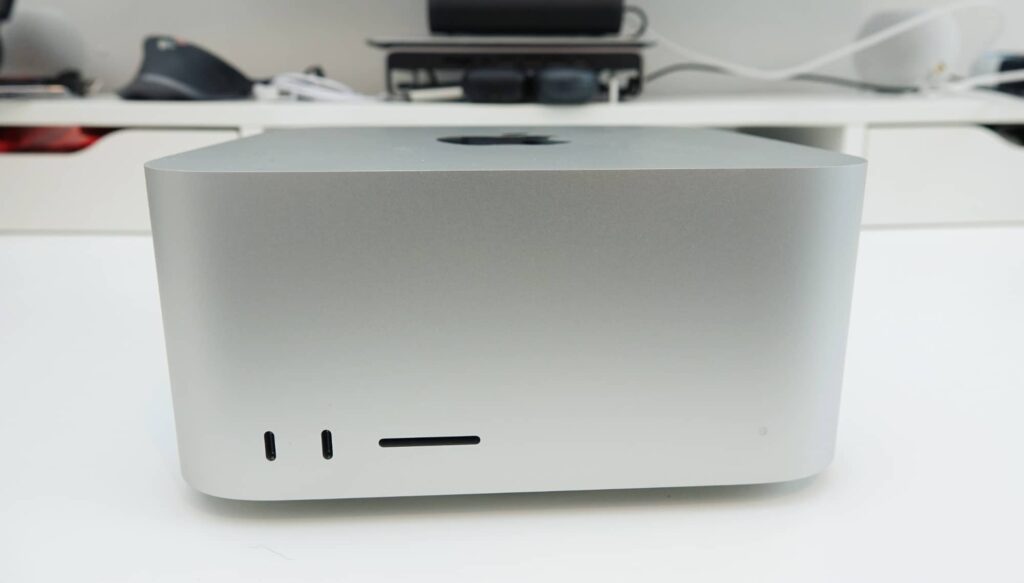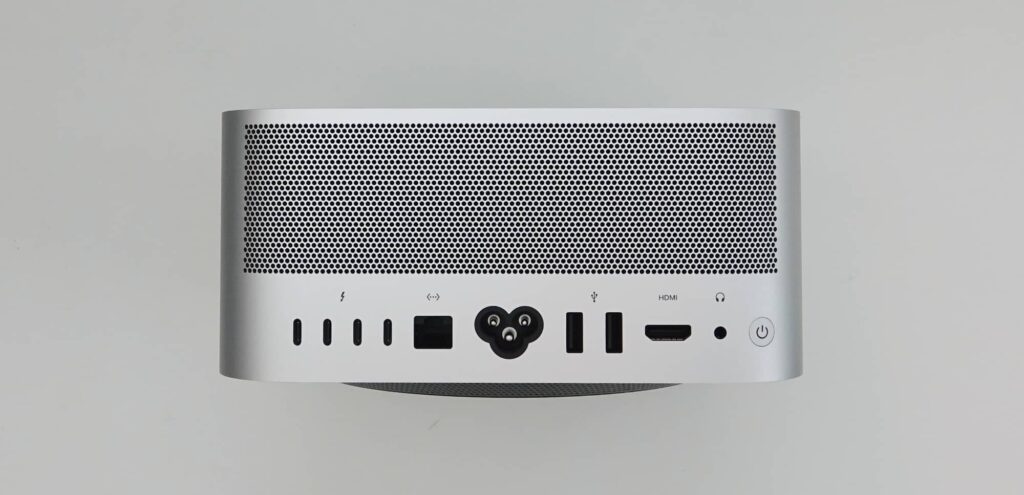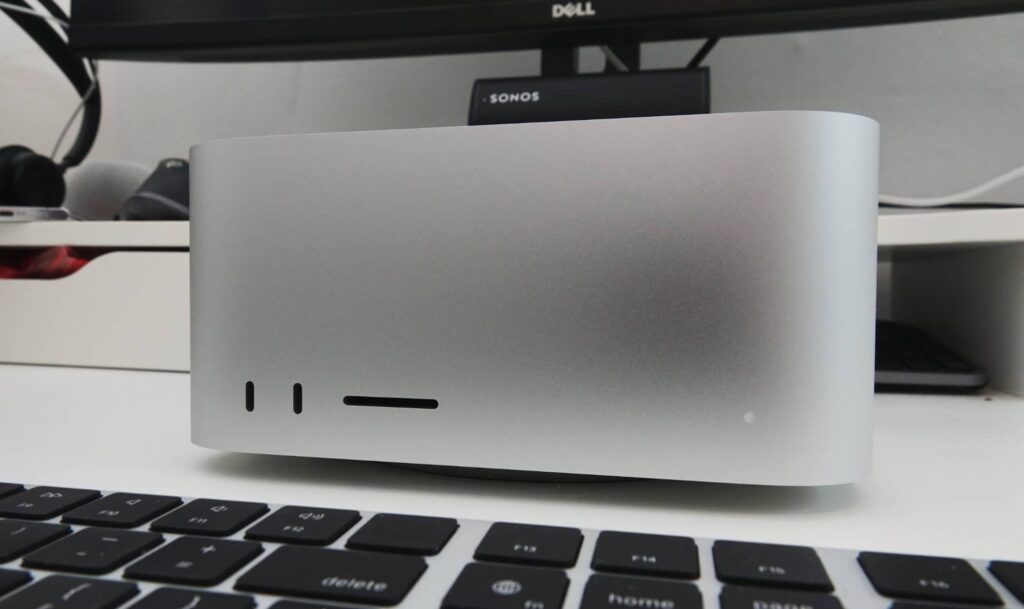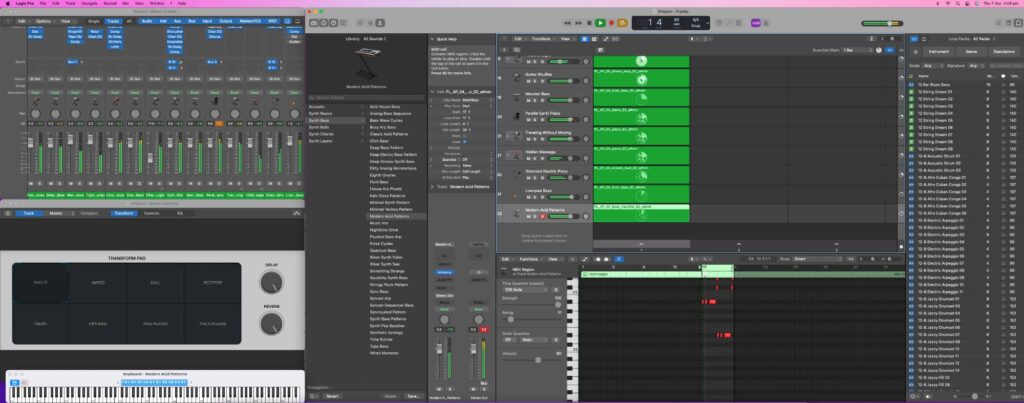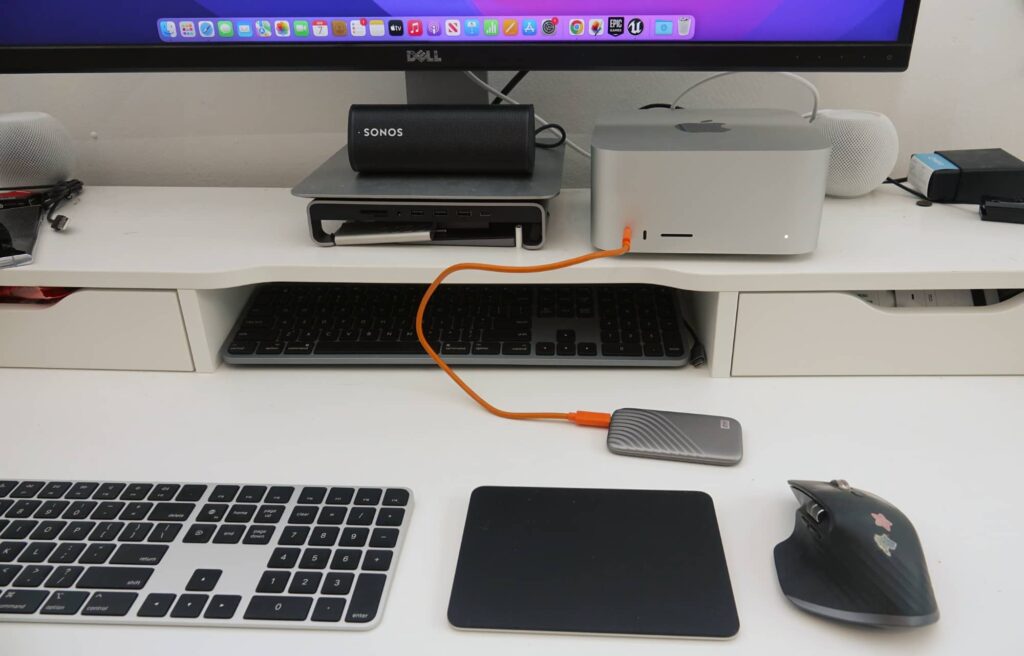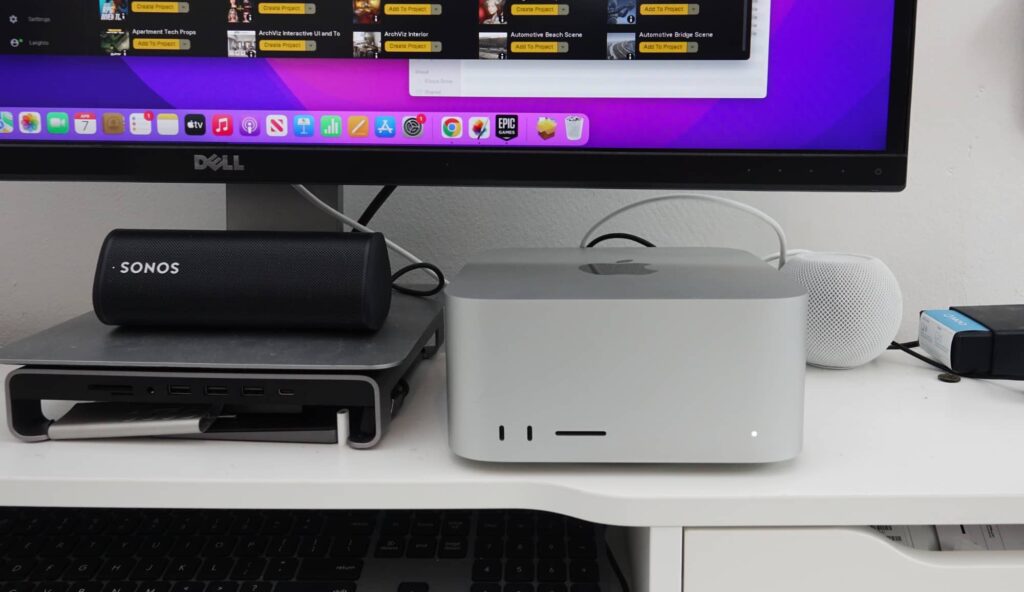Quick review
The good
The not-so-good
Content creators have different needs to everyone else, and if you need more power than your computer has, you might want to check out 2022’s Apple Mac Studio. Is it worth the high price?
Even though there are clothes that are certainly one-size-fits-all, in the world of computers, that’s not necessarily true. One computer can serve a multitude of purposes, but if your needs are specifically driven by power and lots of it, the computer your parents or friends use mightn’t be the one that’s best for your needs.
That’s one reason why there’s so much choice in the world, with plenty of picks of computers, be it those that stay put on your desk or those that have a battery and can and will travel.
The former can typically come with more power, though, with desktops able to pack in the hardware for those who need it. And if you’re someone who needs power, Apple’s latest computer could well be for you. What is the Mac Studio, just who is it for, and is it a desktop worth buying?
Design
Apple is known for its solid industrial design, and in the Mac Studio, you’re going to get more of that.
Design-wise, the Mac Studio is very similar to the footprint of the Mac Mini, except taller. It basically looks like the 2020 M1 Mac Mini, except with more height. Yet there’s a little more going on there, too.
Built to match the metal-encased design of the Studio Display, Apple’s computer shares not just a name, but also a look: silver metal stylings and little dots of vents at the bottom, similar to the speaker grill of the Studio Display.
The ports are similar, too, with the unmarked Type C ports on the back of the Studio Display making an appearance here, both on the front where there are two, though the two are different dependent on the model you buy and how much you spend.
Features
Those front ports can help set the trend for why paying more on the Mac Studio gives you a little more, though the feature set is fairly impressive all the same.
For instance, if you opt for the M1 Max variant of the Mac Studio, the two front ports are USB Type C ports, sitting alongside an SDXC card slot, something we’re glad the desktop has accommodate for photo and video editors. But if you opt for the more expensive M1 Ultra model, Apple pushes the front ports to Thunderbolt 4 Type C ports, increasing the maximum speed from 10Gbps to 40Gbps, to go with all that extra speed you’re getting from the M1 Ultra chip.
Inside, the hardware is pretty much identical through the model variations, save for the difference between the fast M1 Max or the faster M1 Ultra, which is also basically two M1 Max chips joined together.
The Mac Studio features a minimum of 32GB RAM, but can be pushed to either 64GB with the M1 Max or up to 128GB with the M1 Ultra, while the storage starts at 512GB SSD, and can be configured all the way to 8TB if you need it… and have the funds (welp).
There’s support for Bluetooth 5 and WiFi 6 802.11a/b/g/n/ac/ax here, plus a physical Ethernet connection for Gigabit networking at 10Gb (if you prefer physically connecting a network cable), with the other ports all sitting on the back, including one 3.5mm headphone jack, two old-school rectangular USB-A ports, an HDMI port, and four Thunderbolt 4 ports that also work for DisplayPort and USB with both 3.1 and USB 4 support included.
You’ll also need to keep this Mac plugged in with a power cord at the back, but don’t worry, there’s a port for that, too. There isn’t an external brick, though, so you can literally just plug the Studio Mac in and you’ll be good to go.
In-use
More or less, anyway.
A Mac without a screen or a battery, Apple’s Mac Studio is reminiscent of the Mac Mini in that it’s very much built for people who want a desktop and don’t need the extra bits and pieces a laptop comes with.
As such, you won’t get a keyboard or mouse here, and you won’t get the screen. You can either buy totally new ones, or you can go with what you have.
For the purposes of this review, we tried both, connecting it both to the Studio Display and to our 34 inch Dell ultra-wide, both of which worked a charm, allowing us to use the Mac as you would any other Mac.
That is, for the most part, what the Studio Mac is: any other Mac.
If you’ve used a Mac recently, the learnings to how you use that Mac work with this one, with the main difference being that this computer has a whole lot more power than most machines you might be playing with.

Interestingly, the on-board speakers aren’t a great inclusion, as they just don’t sound spectacular. This is probably one of those instances where Apple would direct you to a different sound solution, such as the six speaker system on the Studio Display, the use of a HomePod Mini, opting to use headphones like the AirPods Max, or the solution we’ve been going for: several unnecessary Sonos speakers set up to work over AirPlay and turning our office into a box of sound. Hoorah.
They are better than what you get on the Mac Mini, easily the least impressive feature on that system, but you’re not going to want to rely on the rear-only speaker of the Mac Studio, which probably should have been found on the left and right sides, and not just at the back.
Fortunately, there’s more going on in the Studio Mac than just the speakers.
Performance
Built for performance, the Mac Studio is basically a beast in sheep’s clothing, something you can say simply by looking at the machine.
The whole thing looks unassuming, like a slightly taller Mac Mini with a few more ports.
Yet inside, Apple has made use of the space with its biggest and most powerful M1 chips, and it shows.
Synthetic benchmarks showed the M1 Max used in our Mac Studio review push this thing well, but the real show of power came from the real world tests we put the Mac Studio through.
Layers and layers of MIDI with effects in Logic Pro X didn't get it to bat an eyelid, while doing the same with the M1 Pro on a MacBook Pro caused that device to flinch, and the 2021 MBP 16 is no slouch.
One of our favourite tests lately is to check the FPS reading on a project we've been working on in Unreal Engine, a particle-laden environment of Mars, as if you were sitting on the red planet waiting for a scene to roll out. On previous M1 models, we'd be lucky to get this thing about 8 frames per second in Unreal Engine 4, and the whole thing was practically unusable.
With Unreal Engine 4, we hit 16FPS, while on Unreal Engine 5, our Mars test environment pushed 32 frames per second. We've never achieved anything near that on this level, suggesting maybe we should crunch those polygons a little more aggressively.
But also maybe not, because this system can make it happen. Yes, the Apple Mac Studio is built to deliver the performance in spades, whatever you're working on. This thing is nuts, and brilliant for it.
Value
Of course, "nuts" does come with a price, and that price is equally, well, nuts.
In Australia, the starting price of the Mac Studio is $3099, while the model we used in this review was a customised variant, fetching around $5799 instead. Yikes.
This is a nearly $6K computer. Whoa mama. We don't think we've ever spent that much on a computer... ever. That's some seriously hefty spending.
But if you need the power, the value is there, because this thing is hard to push. It's hard to force the Mac Studio into a position where it feels like it's struggling, and even without the highest end chip -- and we didn't get to try out the M1 Ultra! -- the Mac Studio is never a slouch.
Throughout our testing period, we tried pummelling it with apps that could bring our regular M1 tests to their knees, and it never let up.
Value is often hard to cite for expensive devices, and more often than not, if something is expensive, it's probably not trying to attract a "value" per se. But you can find value in the Mac Studio if what you need is the sheer horsepower in your system. This thing is freakin' impressive.
What needs work on the Mac Studio?
We're actually in love with what Apple has crafted in the Mac Studio, and this could easily be a system we'd use in our office, though that price is massively prohibiting. So that's probably a no for us.
But the price isn't the only quibble with the machine, as good as it is.
Clearly made for a purpose -- content creators, developers, people who need lots of performance on tap -- the Mac Studio continues Apple's approach for keeping things un-upgradeable, and given this is a pro-focused machine, we're not sure we vibe with that.
The much larger Mac Pro doesn't yet run an Apple Silicon chip, and the 2022 Mac Studio is about as close as the M1 gets to being in a Mac Pro, but we wish it could be upgradeable in some form. Our guess is that when Apple does eventually unveil the Apple Silicon Mac Pro, it will come with modular options for plugging in Apple Silicon chip sections, allowing you to upgrade the power by throwing in a block of say an M1 Pro or an M1 Ultra, and customising the living heck out of it.
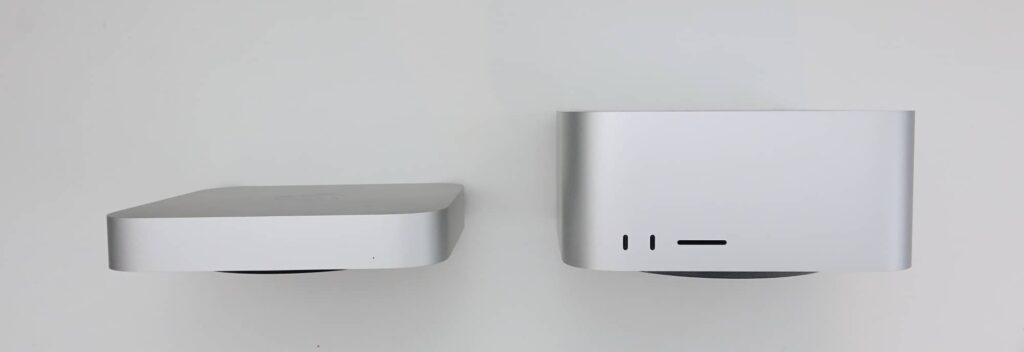
But the Mac Studio isn't that computer. Like other Mac models -- like the M1 MacBook Air and M1 MacBook Pro -- it's locked into place for how you bought it when you bought it.
When you buy the 2022 Mac Studio, you're buying the computer as you want it, and it will stay like that largely forever. There's no way to upgrade the memory here, or even to boost the internal storage from the way it was when you first bought it. If you opt for the $3099 starting model with 512GB SSD, the only way to boost that storage is to use external drives.
You also don't get a keyboard or mouse, though that's probably less of an issue. If you're spending a minimum of $3K on a new computer, an extra $100-200 for keyboard and mouse is probably no big deal, and like we learned in our Mac Mini review, you need a keyboard and mouse that can be wired -- like the ones Apple makes -- to set this computer up.
Final thoughts (TLDR)
If money was no object, we'd grab one of these computers in a heart beat, but that's because we feel like we'd need one.
We produce content, so the Mac Studio makes sense. This writer doesn't just spend time on his laptop writing carefully crafted reviews and security articles, but also makes music, videos, edits photos, and even works on 3D and VR animation projects. He is a content creator. The Mac Studio is for him and people like him.
But that's not everyone.
The Mac Studio is made for people who need power for their projects, because that's what it was built for. There is, in fact, so much power here that it makes sense for this system to be used in creative industries, and for other folk who need a tremendous amount of horsepower in their day-to-day, because that is what's granted in this machine. The Mac Studio is basically a Mac Pro made mini. That's a great feat of engineering.
Yet that's not for everyone.
Most people don't need scores of processing power on tap for the regular day to day; if you use a computer for emails, productivity, web surfing, listening to music, social media, punching out documents, etc, the Mac Studio is not for you. Any other computer could do this for you.
However, if you rely on apps that need more grunt, chewing up what you give them and spitting out a result, the Mac Studio is totally for you. It's built for the creators, and priced like they're making money off their highly successful projects, too. Whoever they are. Recommended.
